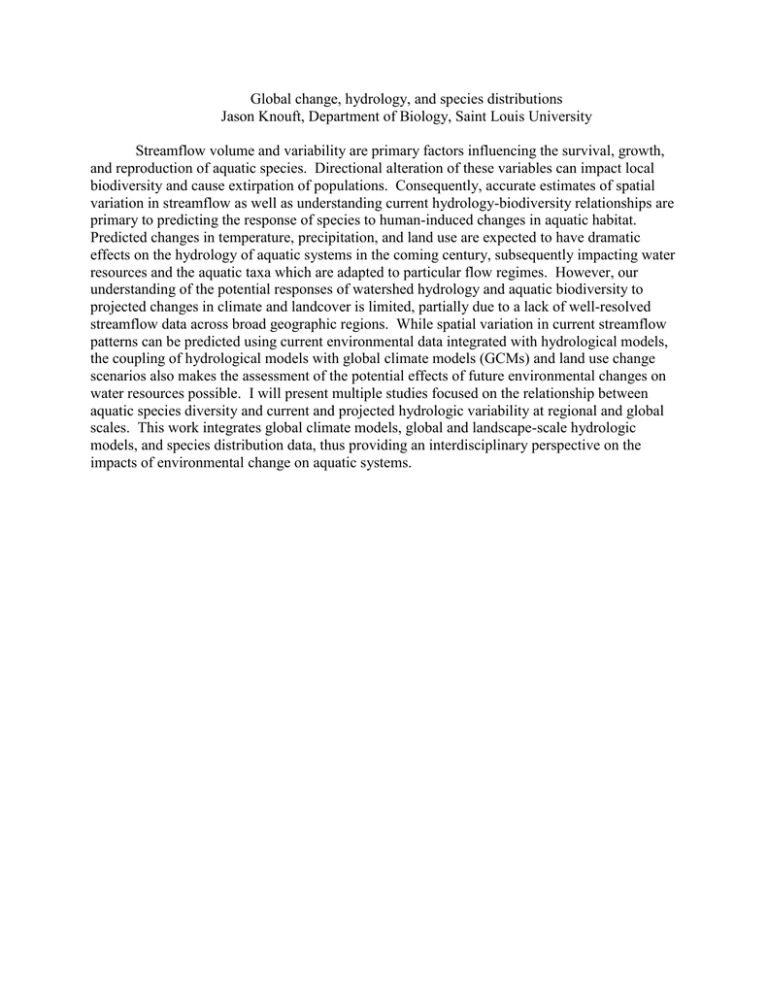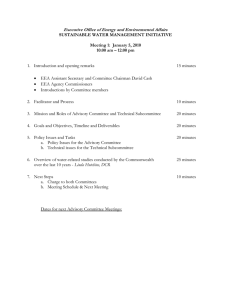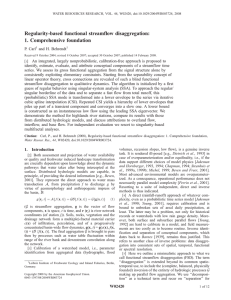Global change, hydrology, and species distributions
advertisement

Global change, hydrology, and species distributions Jason Knouft, Department of Biology, Saint Louis University Streamflow volume and variability are primary factors influencing the survival, growth, and reproduction of aquatic species. Directional alteration of these variables can impact local biodiversity and cause extirpation of populations. Consequently, accurate estimates of spatial variation in streamflow as well as understanding current hydrology-biodiversity relationships are primary to predicting the response of species to human-induced changes in aquatic habitat. Predicted changes in temperature, precipitation, and land use are expected to have dramatic effects on the hydrology of aquatic systems in the coming century, subsequently impacting water resources and the aquatic taxa which are adapted to particular flow regimes. However, our understanding of the potential responses of watershed hydrology and aquatic biodiversity to projected changes in climate and landcover is limited, partially due to a lack of well-resolved streamflow data across broad geographic regions. While spatial variation in current streamflow patterns can be predicted using current environmental data integrated with hydrological models, the coupling of hydrological models with global climate models (GCMs) and land use change scenarios also makes the assessment of the potential effects of future environmental changes on water resources possible. I will present multiple studies focused on the relationship between aquatic species diversity and current and projected hydrologic variability at regional and global scales. This work integrates global climate models, global and landscape-scale hydrologic models, and species distribution data, thus providing an interdisciplinary perspective on the impacts of environmental change on aquatic systems.



